Black raspberries or black cap berries evoke memories of summer berry picking and days gone by for many. They were the first wild fruit I harvested, before I ever picked up a mushroom or knew the word foraging. No doubt one of the most popular wild fruits in North America, today we'll go over what I think you need to know. While covering black cap raspberries might sound basic, even if you've been picking them your whole life you might learn a thing or two from this post.
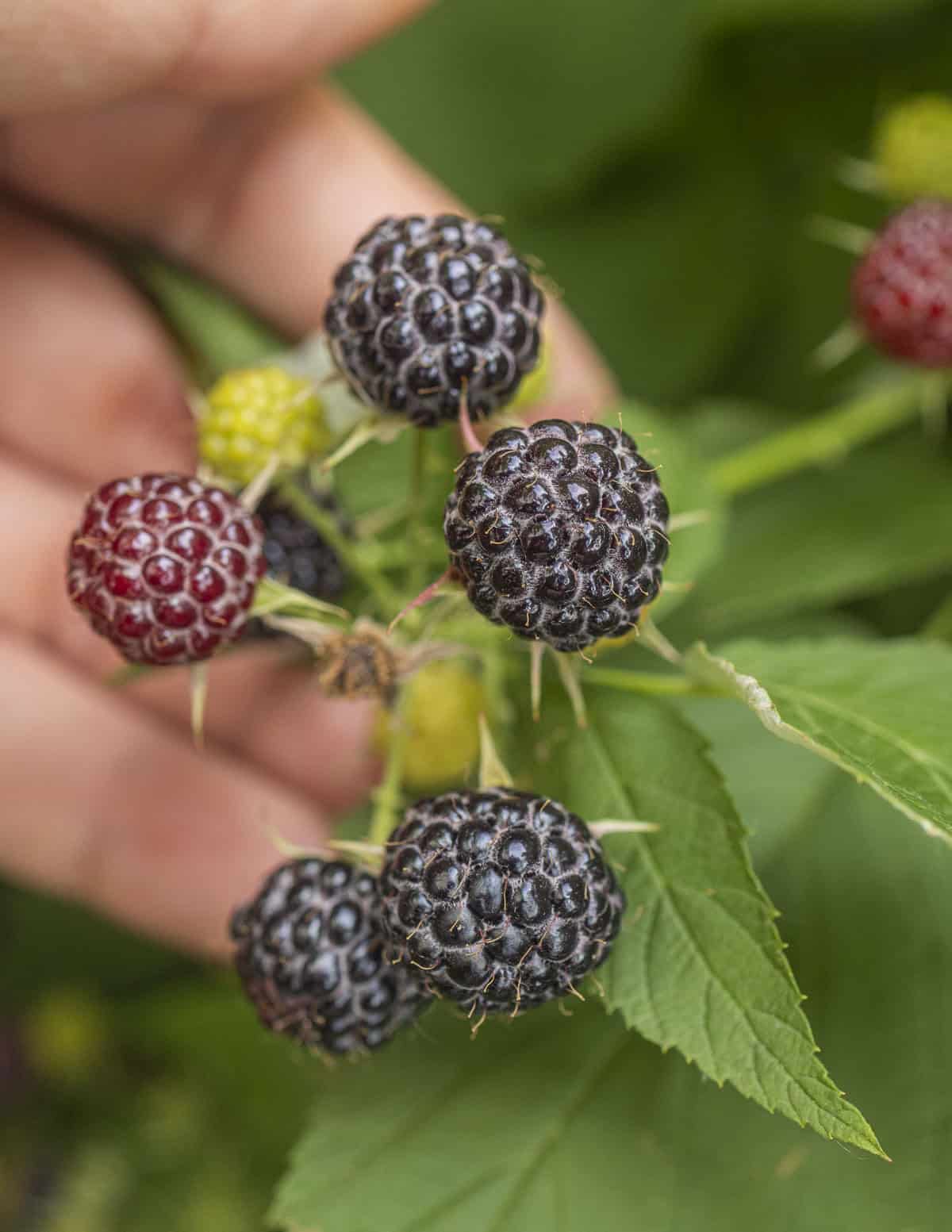
Background
Black raspberries (Rubus occidentalis) are a perennial, deciduous shrub native to North America found on the East Coast and Midwest. On the West Coast and British Colombia there's the whitebark raspberry (Rubus luecodermis) which is a near identical cousin.
Both plants are closely related to red raspberries (Rubus idaeus and Rubus strigosus) and other fruit in the genus Rubus like thimbleberries, dewberries blackberries, cloudberries and others.
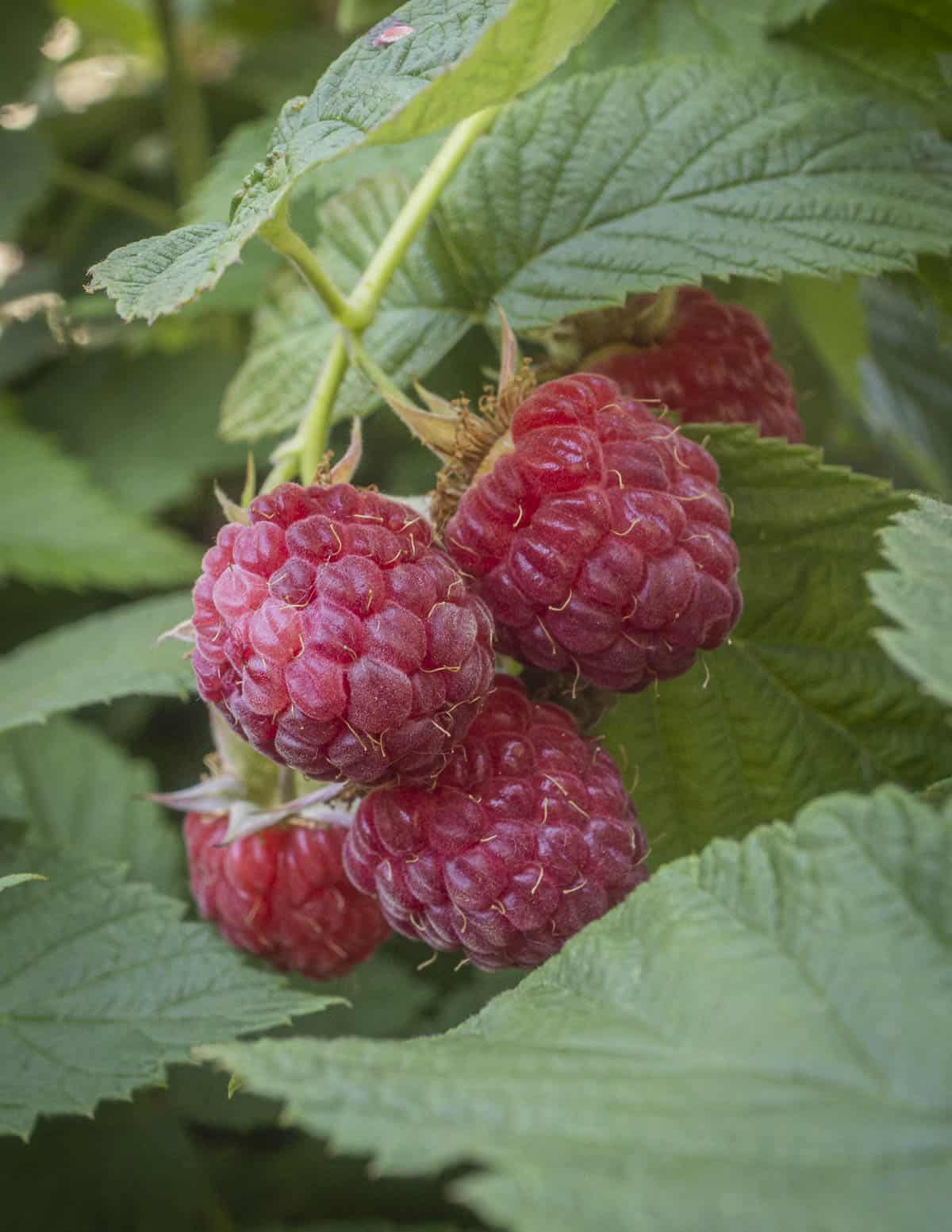
The black cap has a long history of use by humans. Indigenous people of North America have likely enjoyed them, and their relatives for thousands of years.
Smaller than commercial raspberries, the often tiny wild black cap is prized for a deep berry flavor that's noticeably less acidic than red raspberries. Like other dark berries, the deep purple fruit are rich in colorful anthocyanins.
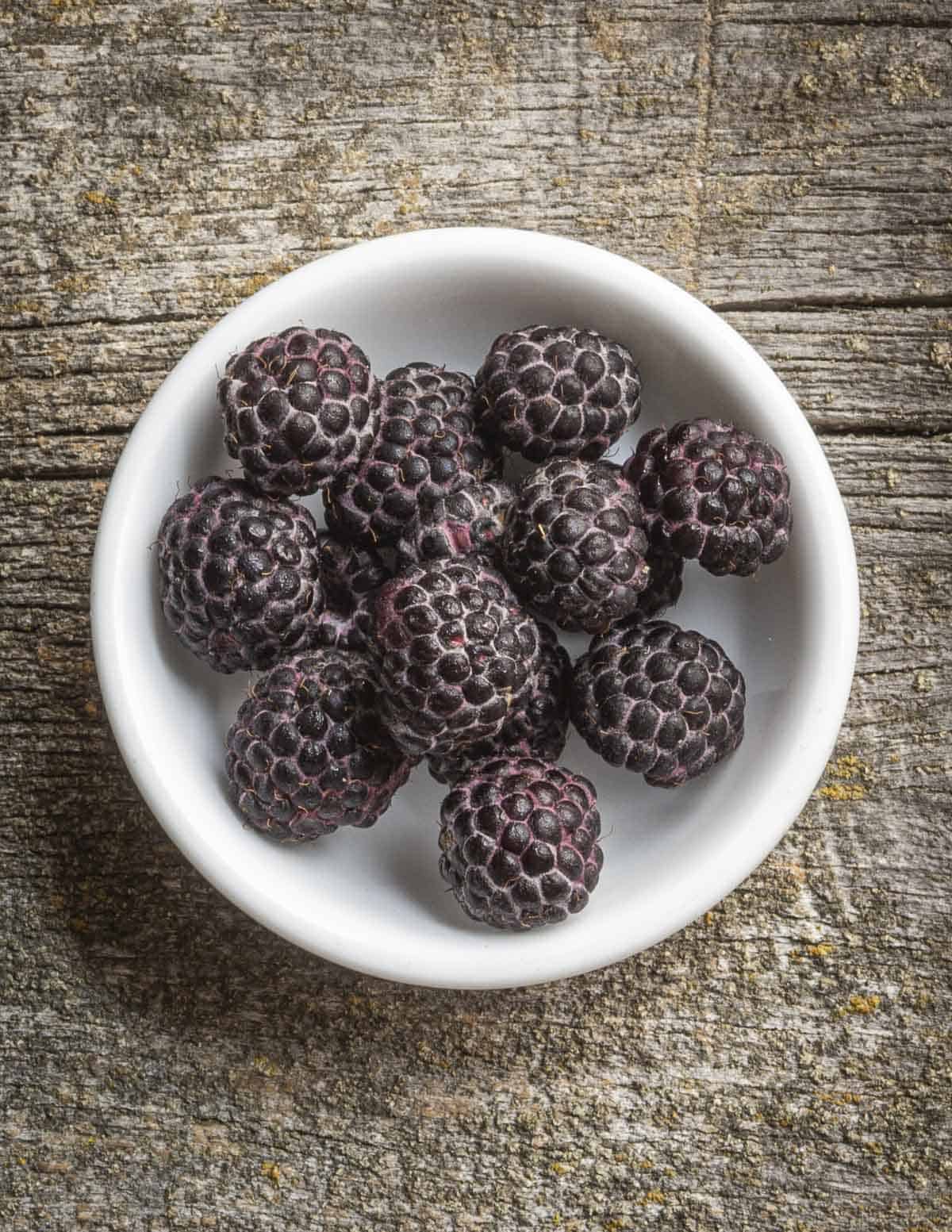
Regarding black caps, my friend, foraging authority Sam Thayer says in his Field Guide to Edible Plants of North America:
"The first jam I ever made, and still one of my favorites. This is possibly the most popular wild berry in North America."
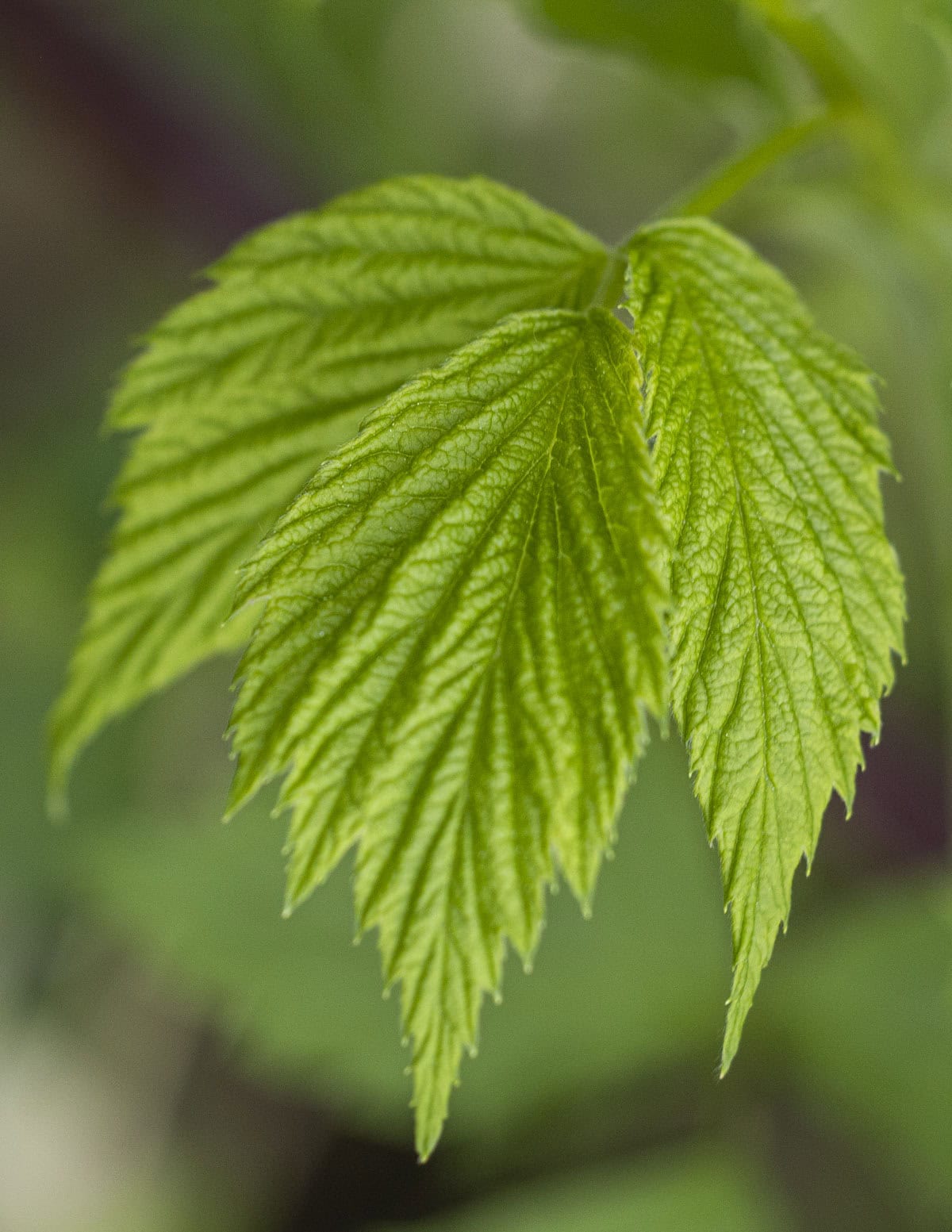
Widely distributed across the West Coast, East Coast, and Midwest, there's no question black cap raspberries are one of our most popular wild fruits. And although they may not be sold at grocery stores (yet), they've been used in a surprising amount of commercial products.
Commercial Use
The berries are sold powdered, freeze dried, frozen, made into commercial liquors like the famous Chambord. Like nettles, the tiny seeds can even be pressed as an oil crop.
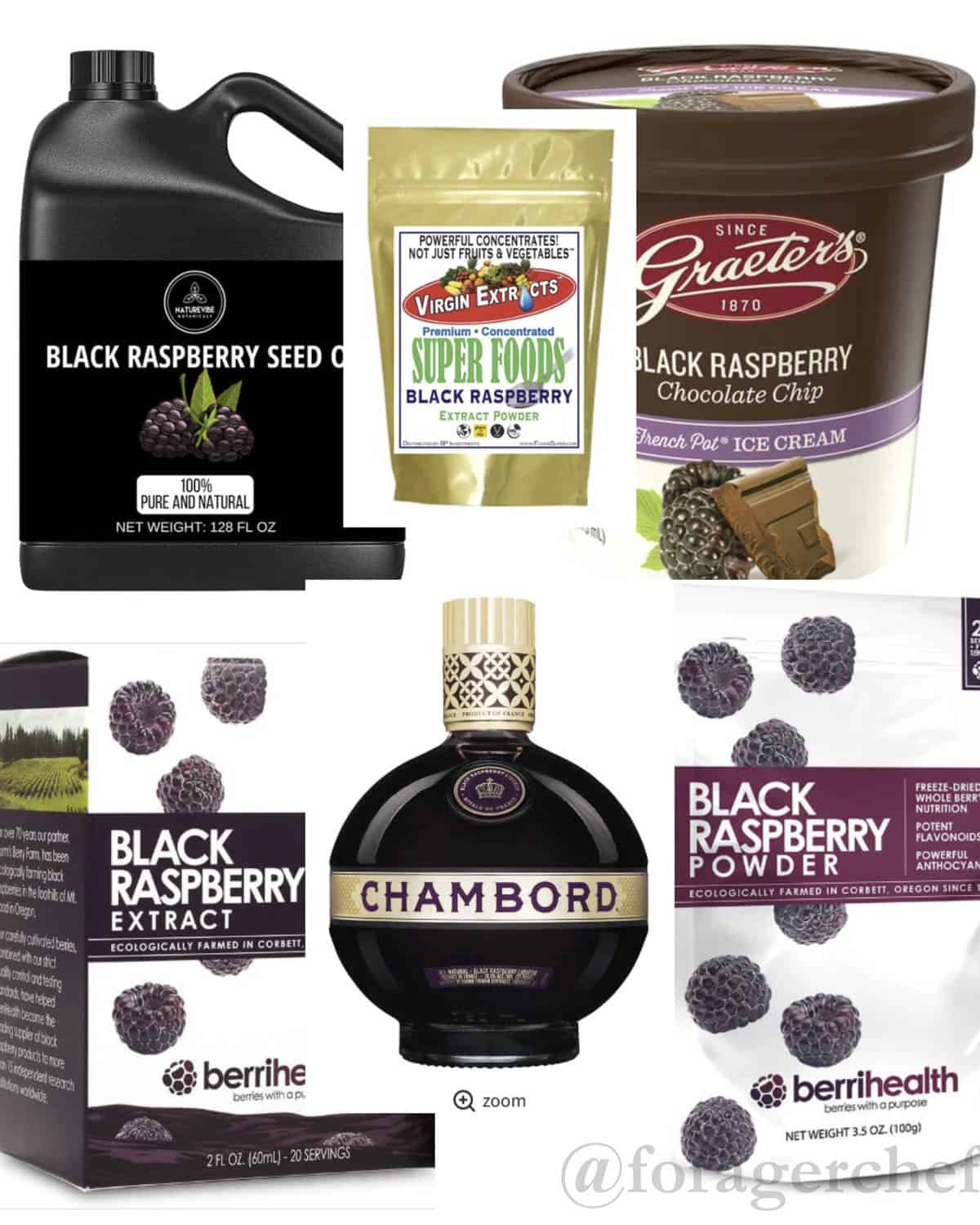
An annual luxury ingredient for chefs, black caps are sold during their short season, ripening in early July. They'll typically available for a week or two. I loved splurging on them for restaurant menus from the farmers market in ST. Paul and through local distributors. Expect $16-35 per pound retail and $10-12 per pound wholesale.
Identification
Although many will recognize the ripe fruit, locating new patches in the off season will get you a bigger harvest. Spotting plants is easy with a few key points.
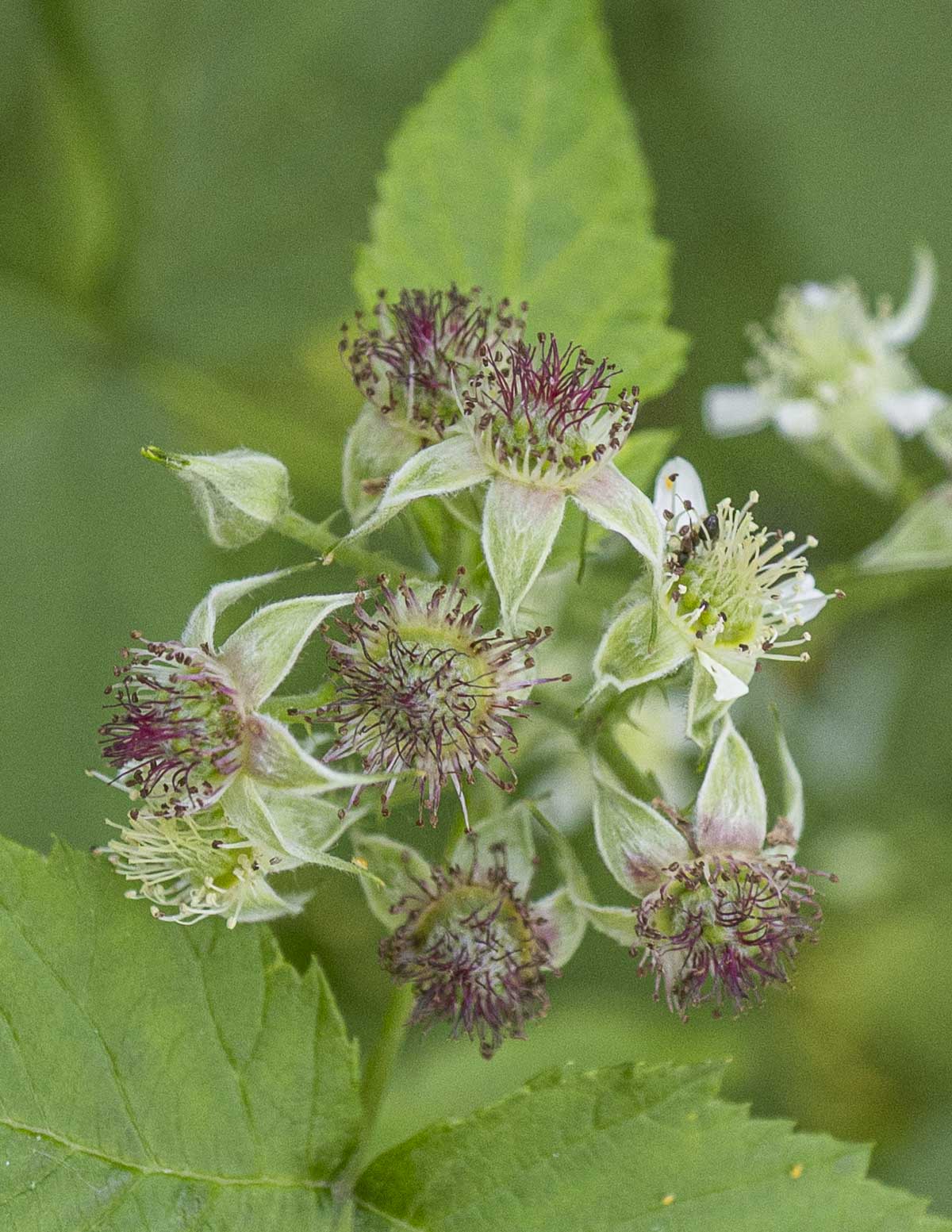
The easiest to memorize for me has been looking at the stems. Black raspberries will always have a dusty bluish-green bloom on the stem, where red raspberries do not.
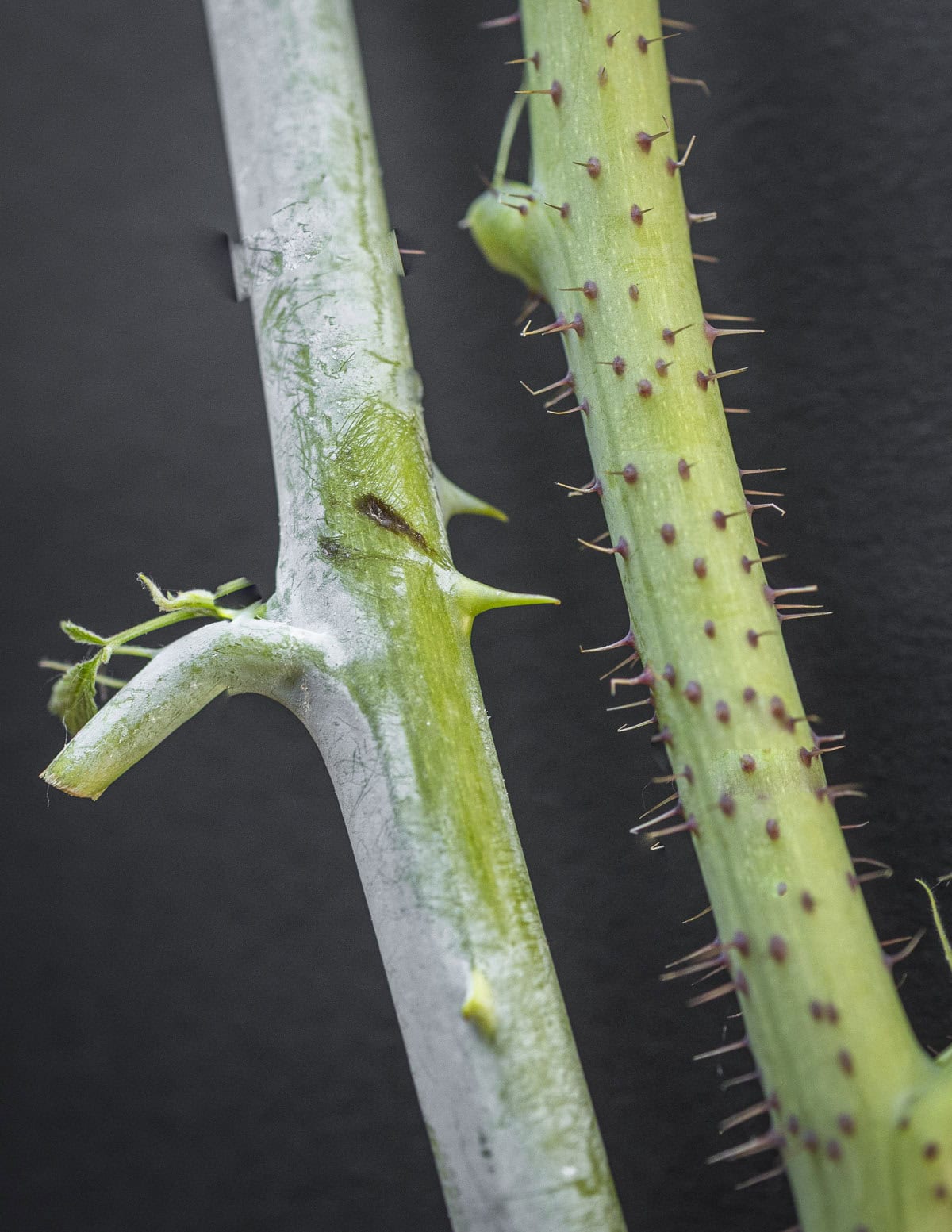
The prickles on red raspberry canes are also much more numerous, although I find the broadly scattered prickles of black caps sharper, and more unforgiving.
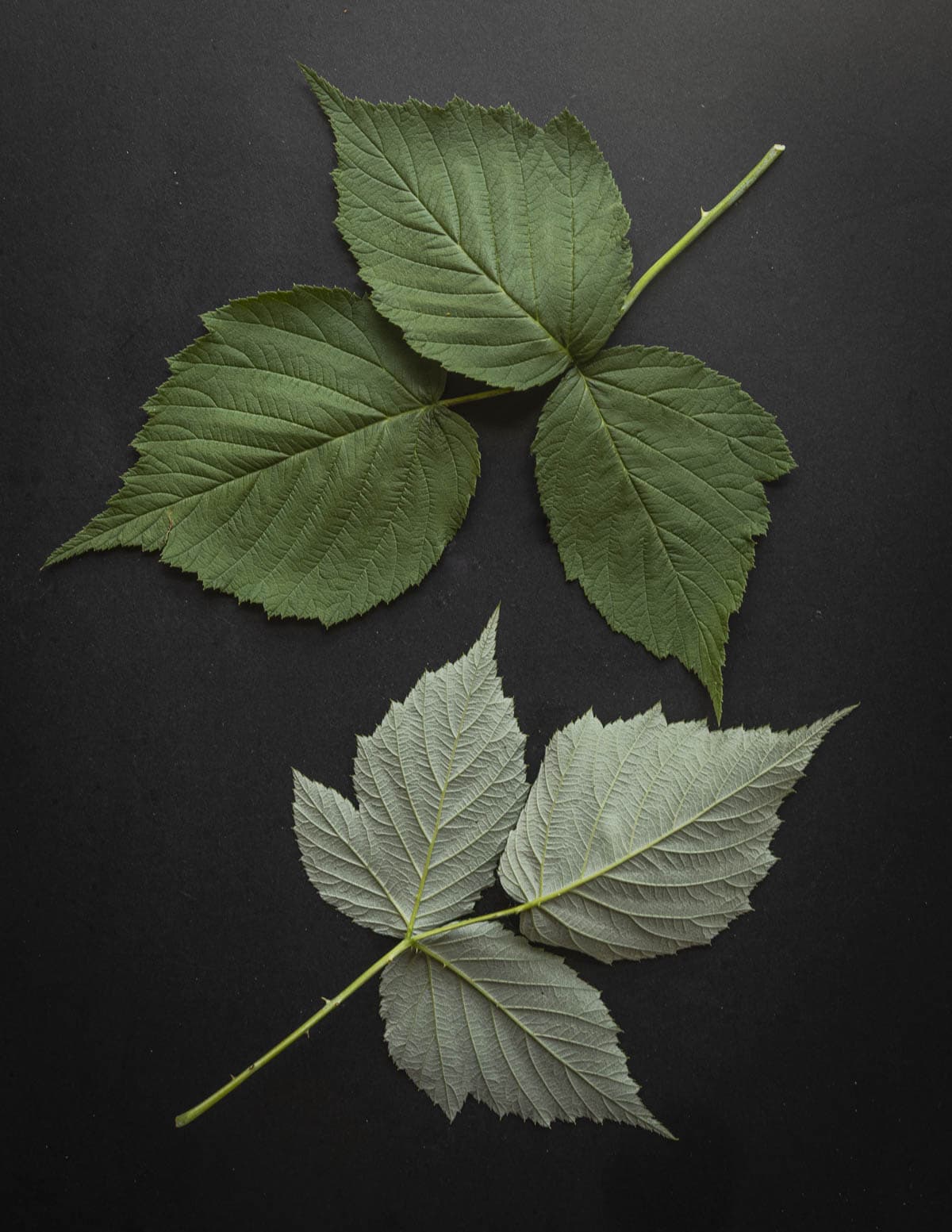
Another tidbit you can use to entertain dinner guests is that with all Rubus each fruit is made up of many smaller fruit containing a single seed, known as drupes.

Growing
Growing black cap raspberries (or any bramble-type berry) is so easy even novice gardeners like me can do it. I marked the location of the largest fruit I'd ever found and dug up a young black raspberry cane from it in the spring. Black raspberry plants are borderline weedy, so I planted the cane in a shady spot in my backyard and waited. They can also be propagated with cuttings.
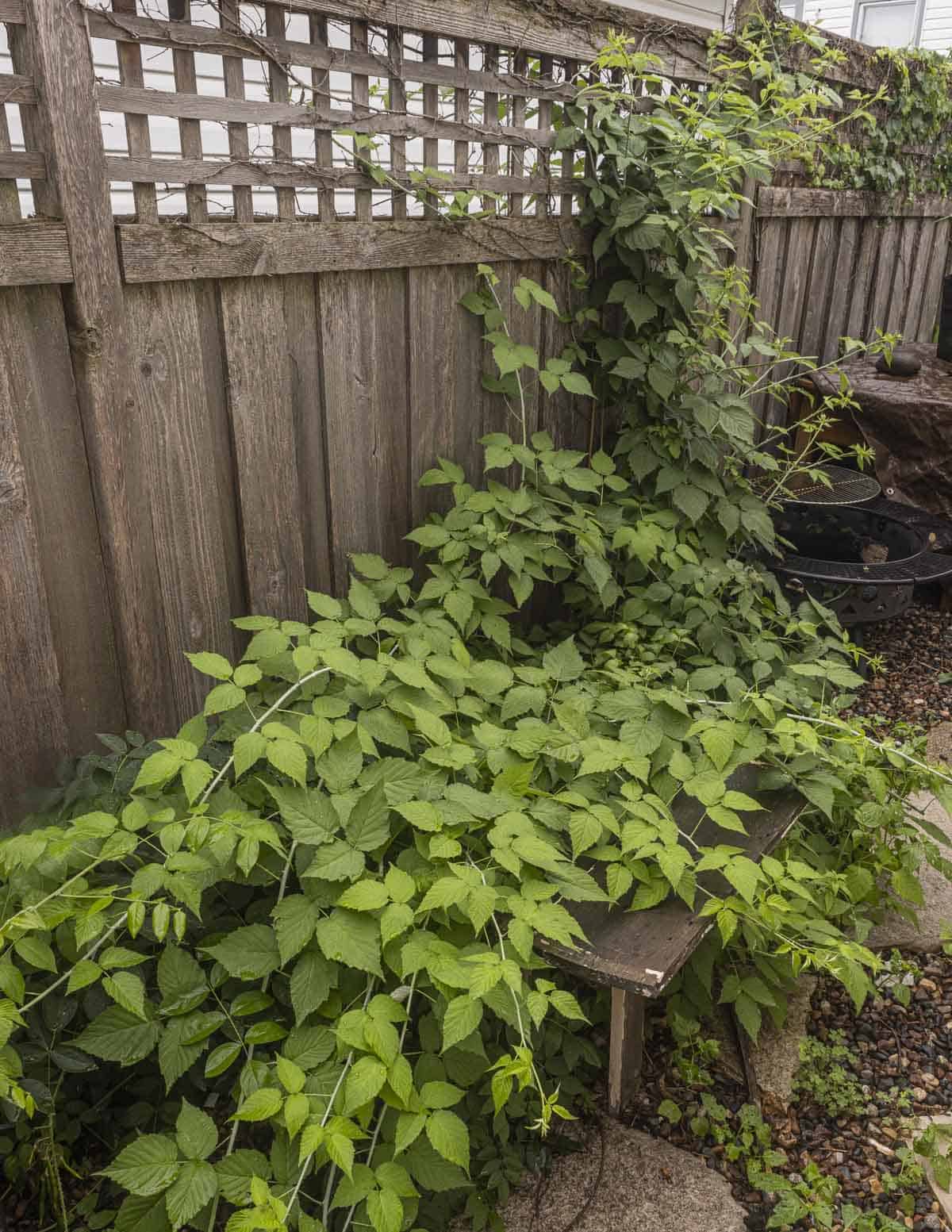
The plant took a year to get established before it made fruit and quickly spread. I put them next to a wisteria vine to help keep them in check (I hope) and have been trimming them regularly to make tea.
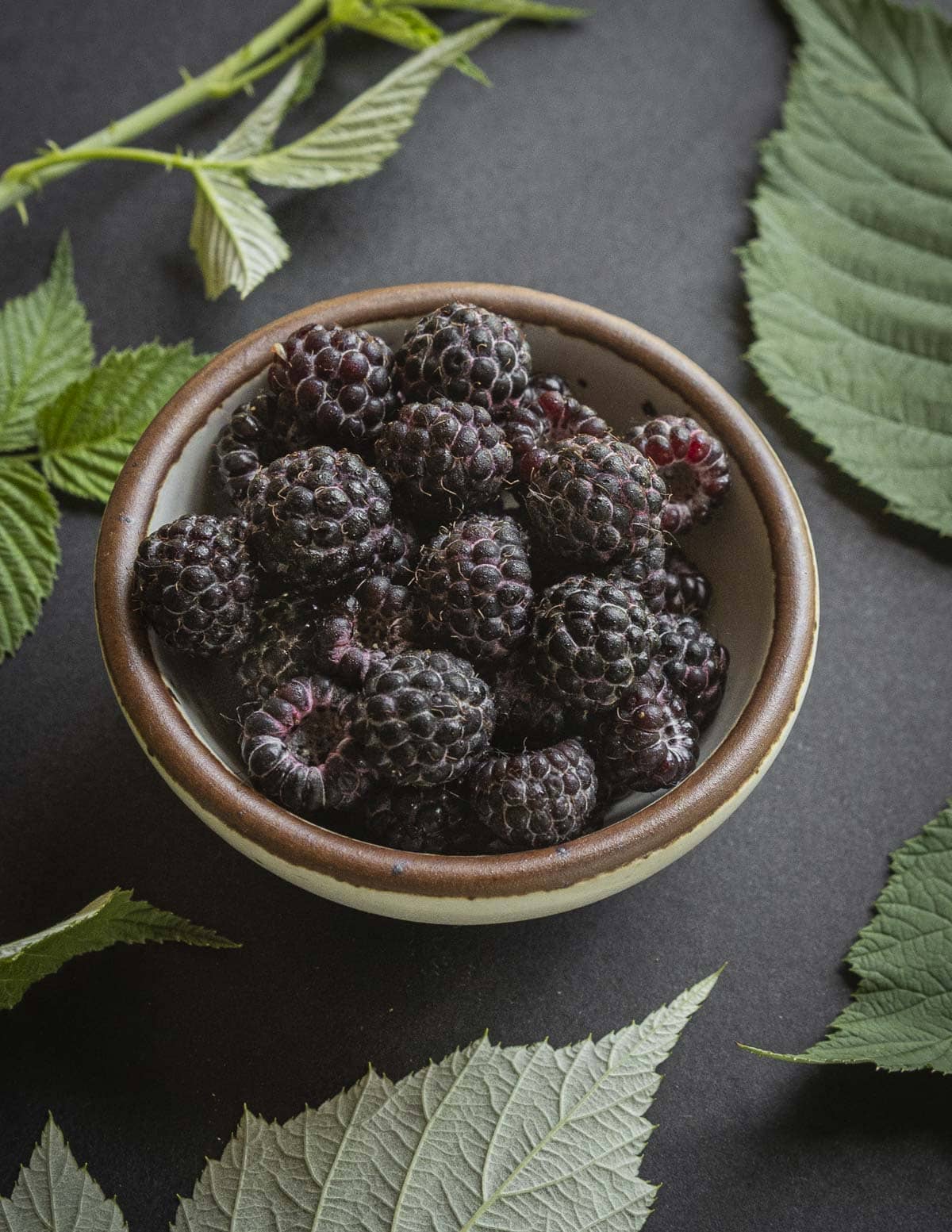
While it's a novelty for me, I should also mention that young spring raspberry canes can be peeled and eaten like a fresh vegetable. Another good Sam Thayer original.
Black Raspberry Cultivars
According to University of Minnesota:
Raspberry types are classified according to when their canes bear fruit—either on new growth from the current season (called primocanes) or on canes that are a year old (known as floricanes). Essentially, raspberry varieties fall into two main groups:
- Primocane raspberries / “fall-bearing raspberries”
- Floricane raspberries / “summer-bearing raspberries”
I was unaware of the variety of patented cultivars available. The idea of double cropping black caps, and particularly the fall-bearing varieties caught my attention. Here's a few varieties I thought sounded interesting.
- Sweet Repeat: A double cropping variety fruiting in early and late summer.
- Ohio's Treasure: a primocane / fall bearing species that could be naturally resistant to fruit flies.
- Jewel: Floricane-bearing variety known for the large fruit. They're similar in size to the unknown variety from my yard in the image below below. Foraged berries from my best wild patch are on the right.
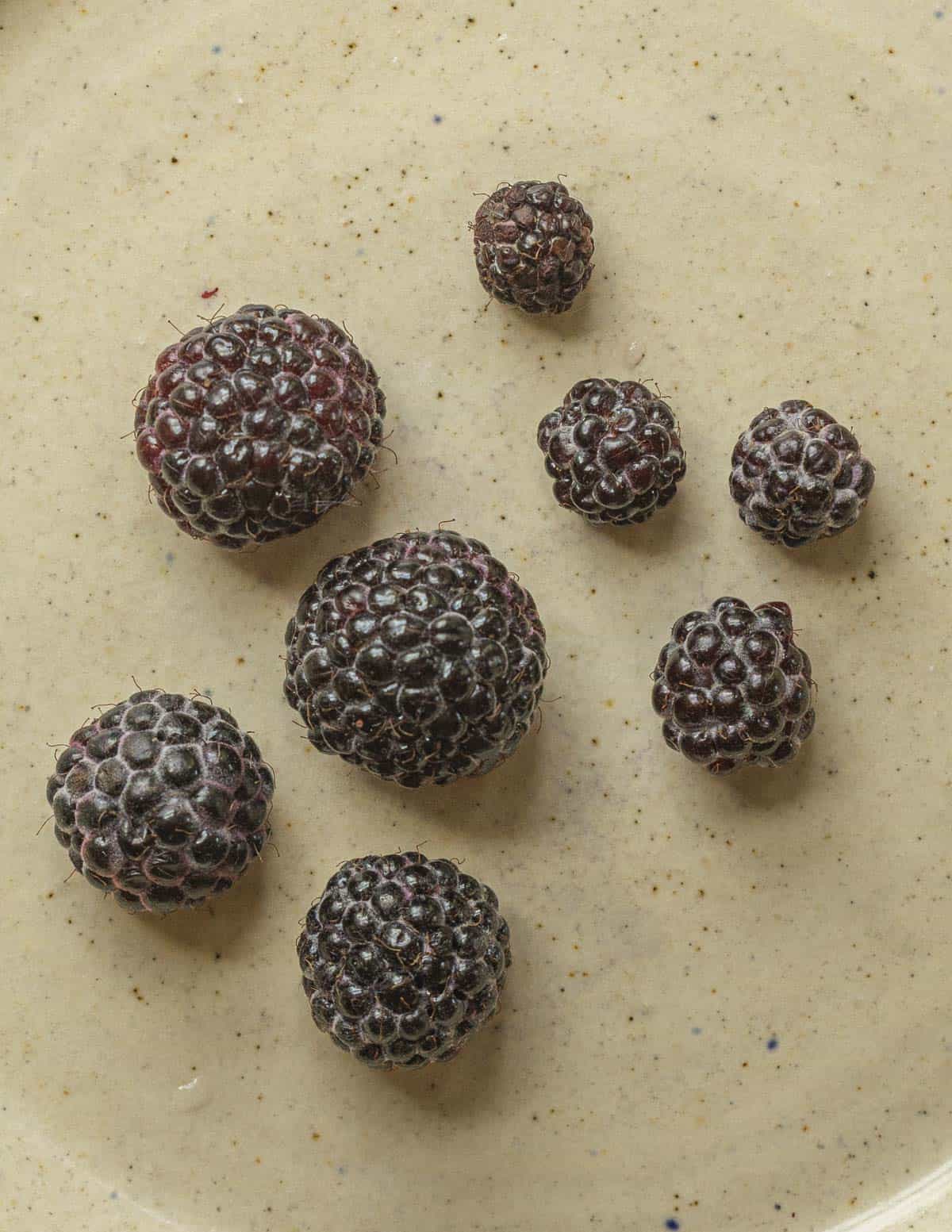
Invasive Raspberry Fruit Worms
For those who don't know, I'm sorry, because what follows is something you can never un-see. If you've ever noticed raspberry fruit appearing wilted or squishy when ripe, it' may's likely caused by an invasive fruit fly called the spotted wing Drosophila, and they're everywhere where I live.
More specifically, the fly larvae burrowing through the fruit drupes are to blame for the wet, soft fruit. take a look at the the punctured drupes from larvae on the fruit below. Seeing tiny flies swarming the shrubs is also an indication you may want to pass.
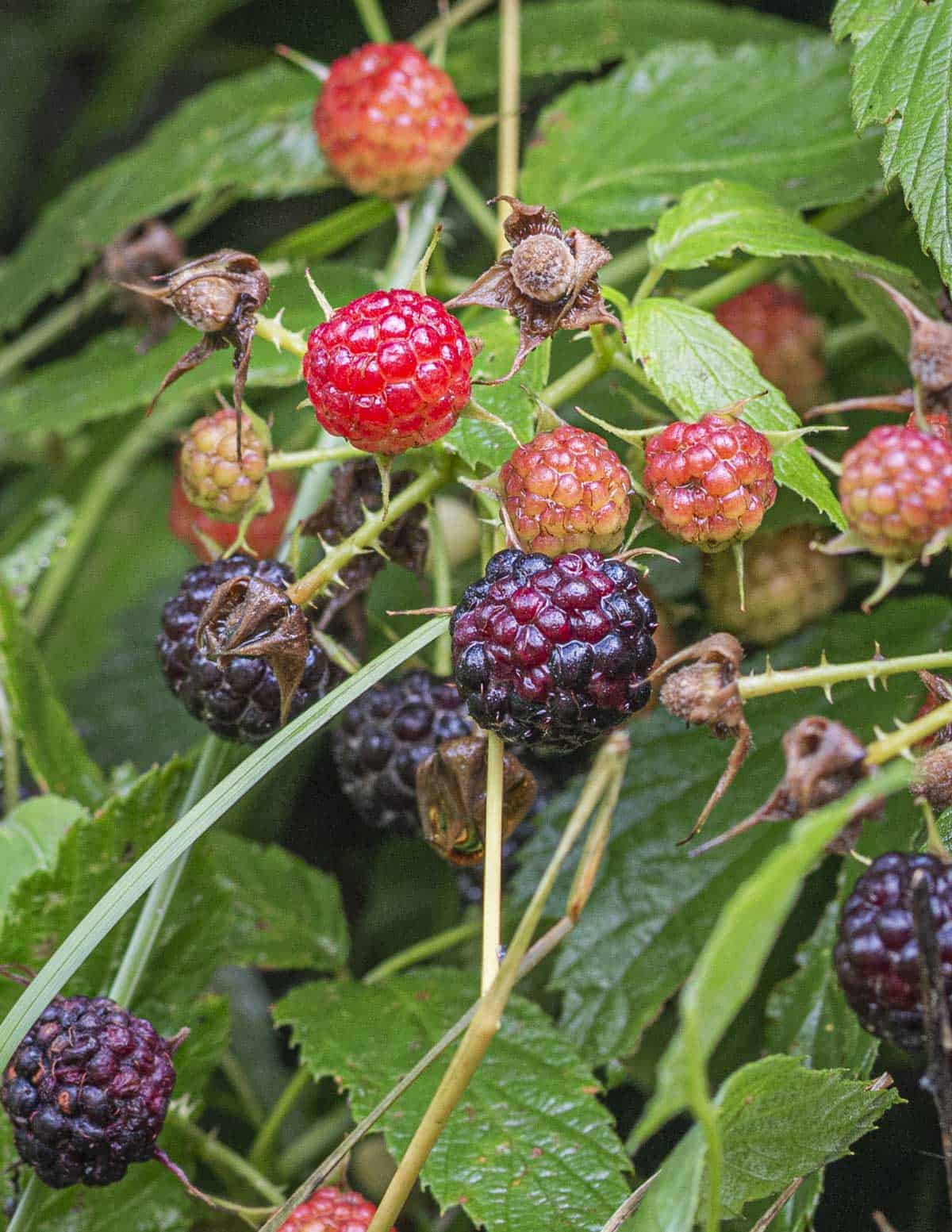
According to the University of Minnesota, these god forsaken creatures were first spotted in the U.S. around 2008, and Minnesota around 2012. They're now so widespread I assume every patch I go to is infected. If you take a squishy fruit, crush it and look closely you'll notice live, writhing, wiggling raspberry worms.
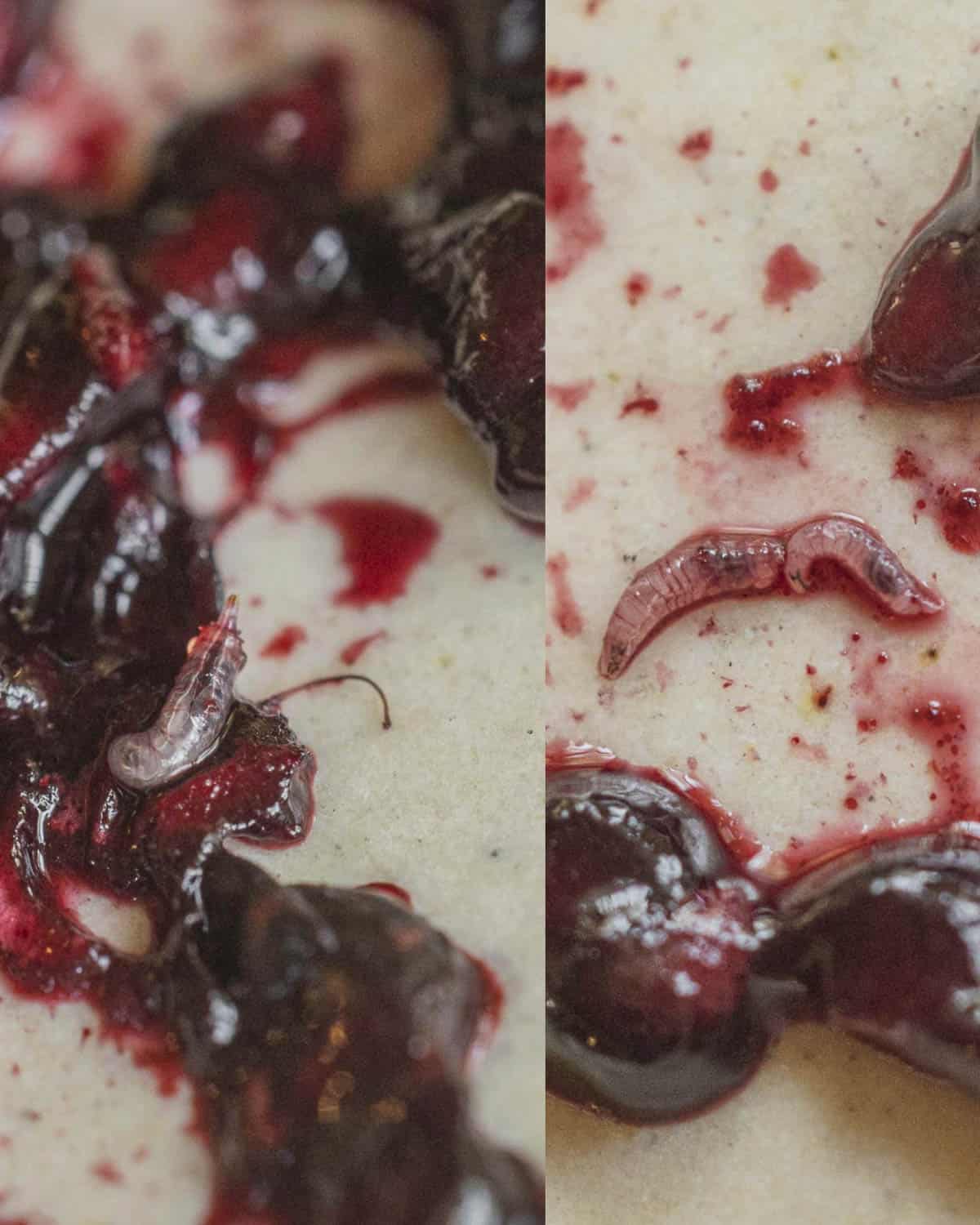
Consuming the worms isn't harmful and they're neutralized by heat and freezing, but I've made batches of jam without knowing and nearly turned green spreading it on toast.
Tips for Managing Fruit Flies and Damaged Fruit
- Inspect the fruit before you pick a large amount to avoid heartbreak.
- The flies love heat and moisture, but, just like fungal gnat larvae, they don't seem like cool weather. This is good argument for reason a fall-bearing black raspberry cultivar may be in my future.
- During droughts I've had many patches be worm-free.
- Damaged fruit will still make incredible vinegar and infused liquors.
- Cold makes the worms "sleep" in a way, slowing the process of chewing through the capillaries of the fruit, but not stopping them entirely. Another reason to chill them promptly or IQF freeze right when you get home.
- Use the berries in recipes that are pureed and strained.
To make matters worse, SWD affects all Rubus species I know, as well as black cherries, chokecherries, blackberries, elderberries, plums (excluding prunus americana from my experience) serviceberries and mulberries. I've even heard of them being in buckthorn fruit. Heaven help us if they reach the blueberries.
Harvesting Tips
Berry picking isn't rocket science, but I've learned a few things from experience over the years.
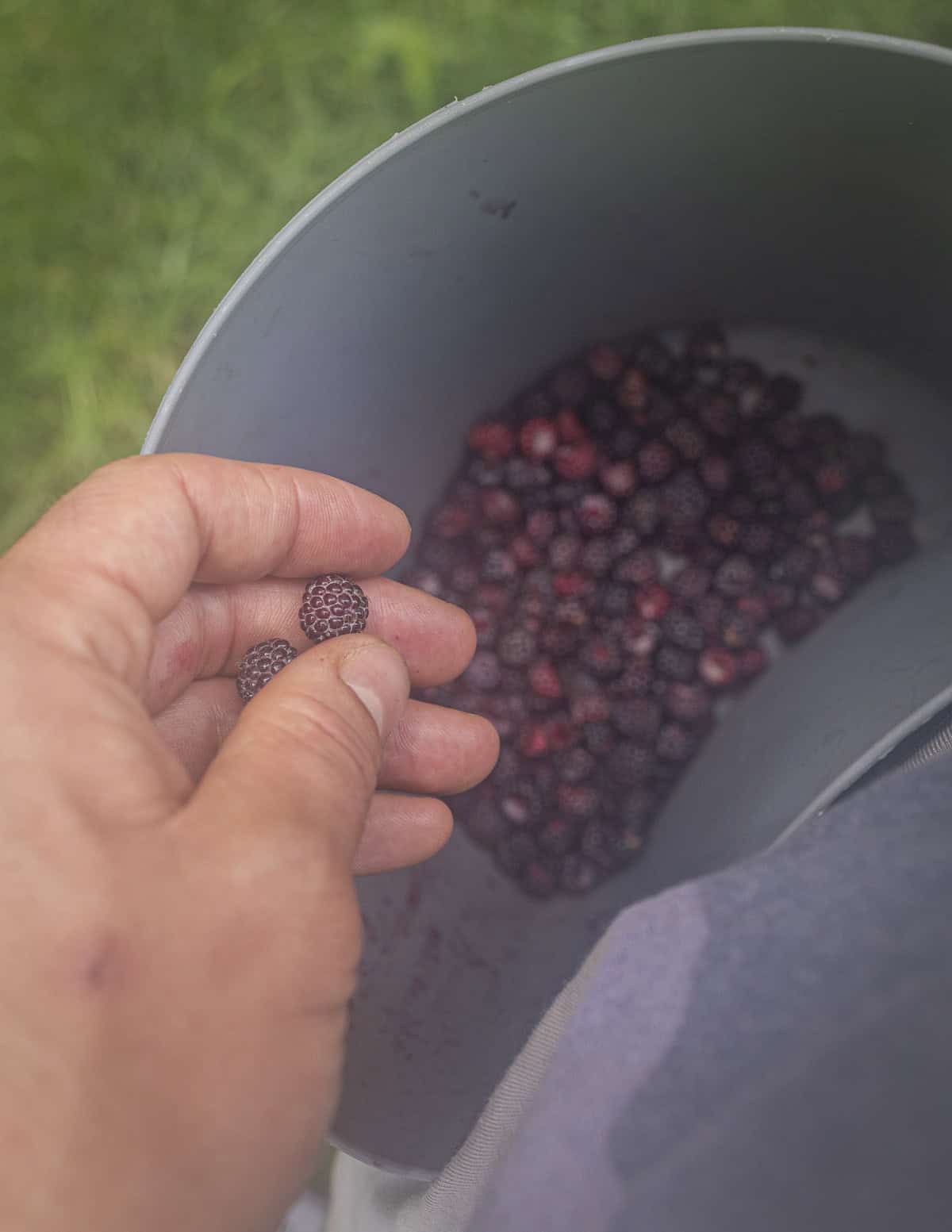
Most importantly, get a blickey. This is a small clip on basket that allows you to harvest with both hands to double your speed. In a pinch I've stuck a coffee cup in my belt.
- Bring friends. Having even one helper will greatly increase your harvest. Child labor is a great option here if you can convince them to not eat them all.
- If you'll be picking large amounts, go out in the morning to beat the heat.
- Remember water, sunscreen, and wear old clothes that won't mind getting caught on thorns or brambles.
- Wear shoes or boots-not clogs, sandals or other open-toed shoes. Raspberry prickles easily break off the canes and get lodged in my socks even when I'm wearing shoes.
- Consider wearing long sleeves and light weight fabric to protect your arms.
Proper Storing and Preservation
One of the most delicate fruits, raspberries need to be chilled as soon as possible after picking. Stored in a pile they may begin to mold and or ferment within a few hours, even in the fridge.
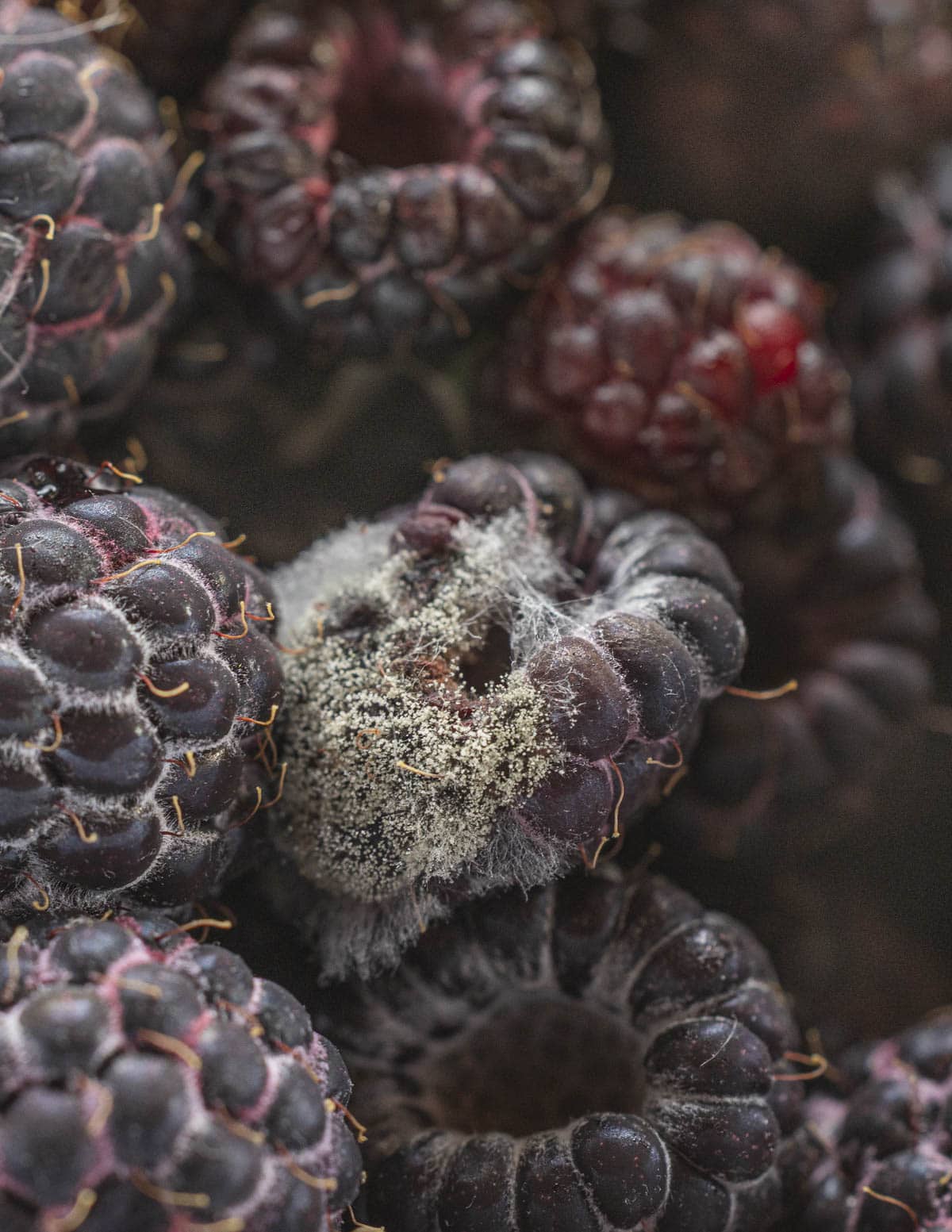
To preserve the integrity of the fruit, I harvest with a blickey, which I empty into a shallow baking pan in a cooler in the car. Aluminum doesn't hold heat like plastic, and storing them in a thin layer helps them cool quickly.
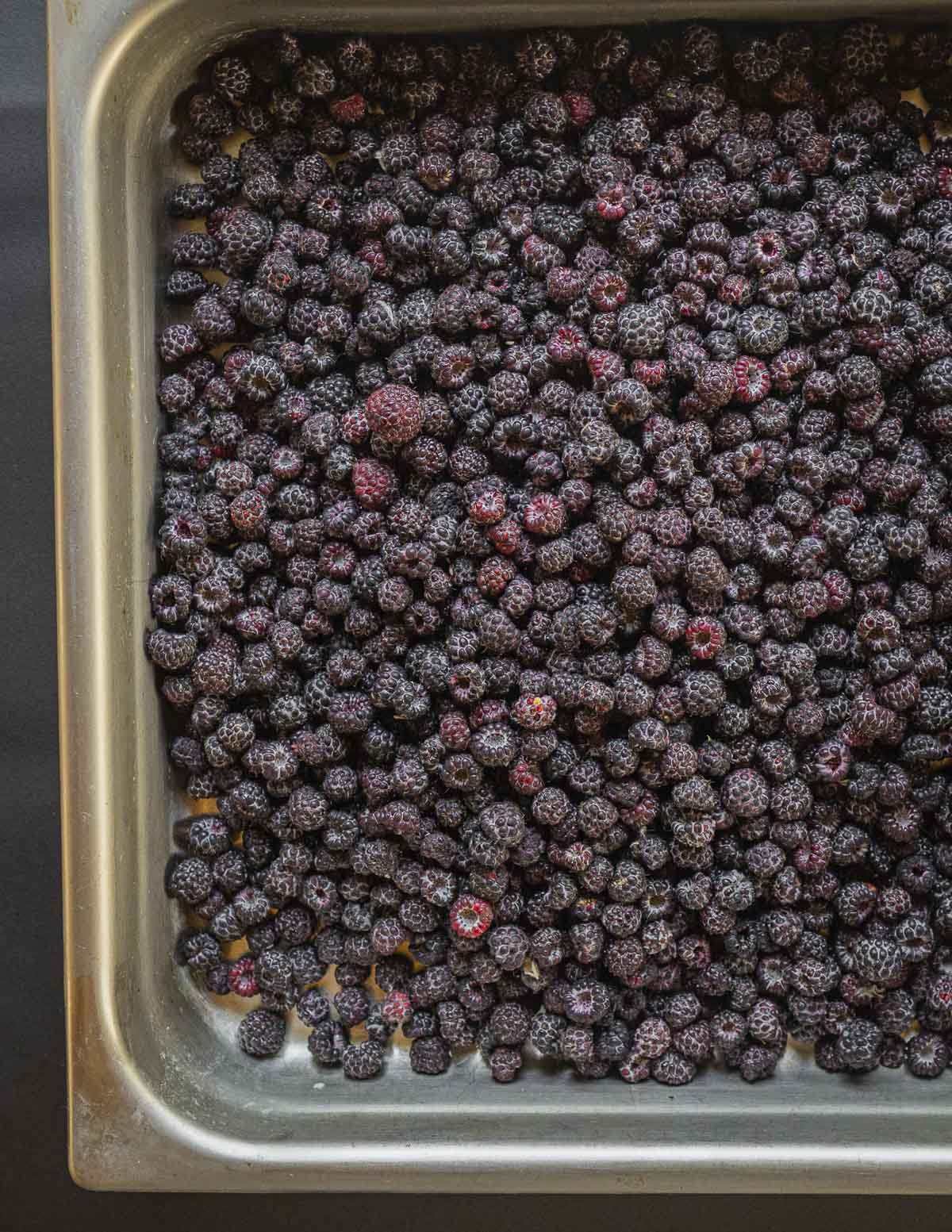
Thankfully raspberries, blackberries and many other fruit are one of the best things to preserve in the freezer. To avoid having a giant block of fruit, use the chef's fruit trick and IQF them (individually quick frozen).
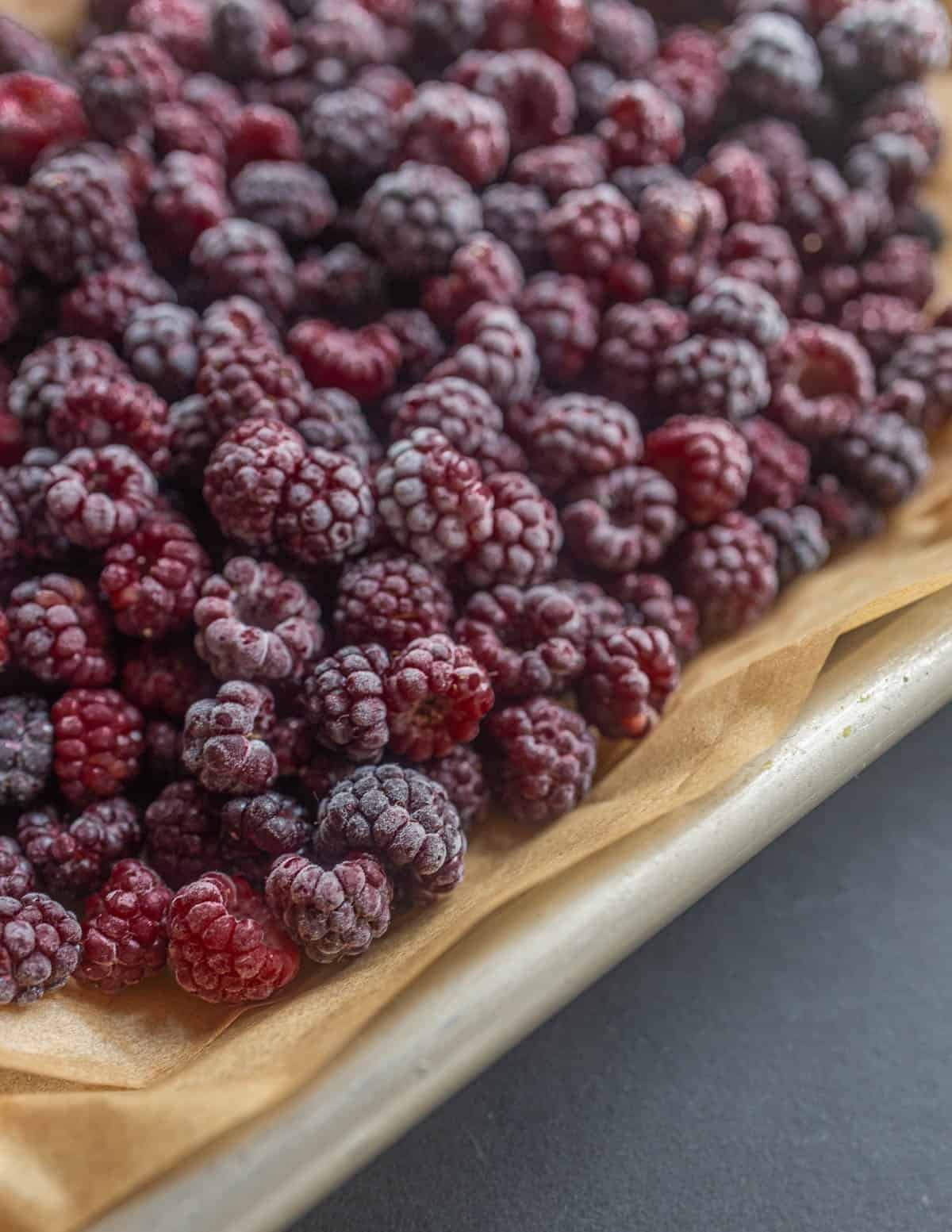
Lay the fruit in a thin layer on a baking sheet lined with parchment. When the fruit is frozen, transfer it to a bag or hard-sided container, ideally with a label and a date. Cook the fruit directly from the freezer.
General Cooking
If you have a few handfuls, there's nothing wrong with a simple bowl of vanilla ice sprinkled with black caps and a thread of maple syrup. If you have a pound or two the possibilities are endless. They can be used in sweet and savory recipes just like you'd use a raspberry, but with a distinctly flavored result. Here's a few ideas and examples of how I use them.
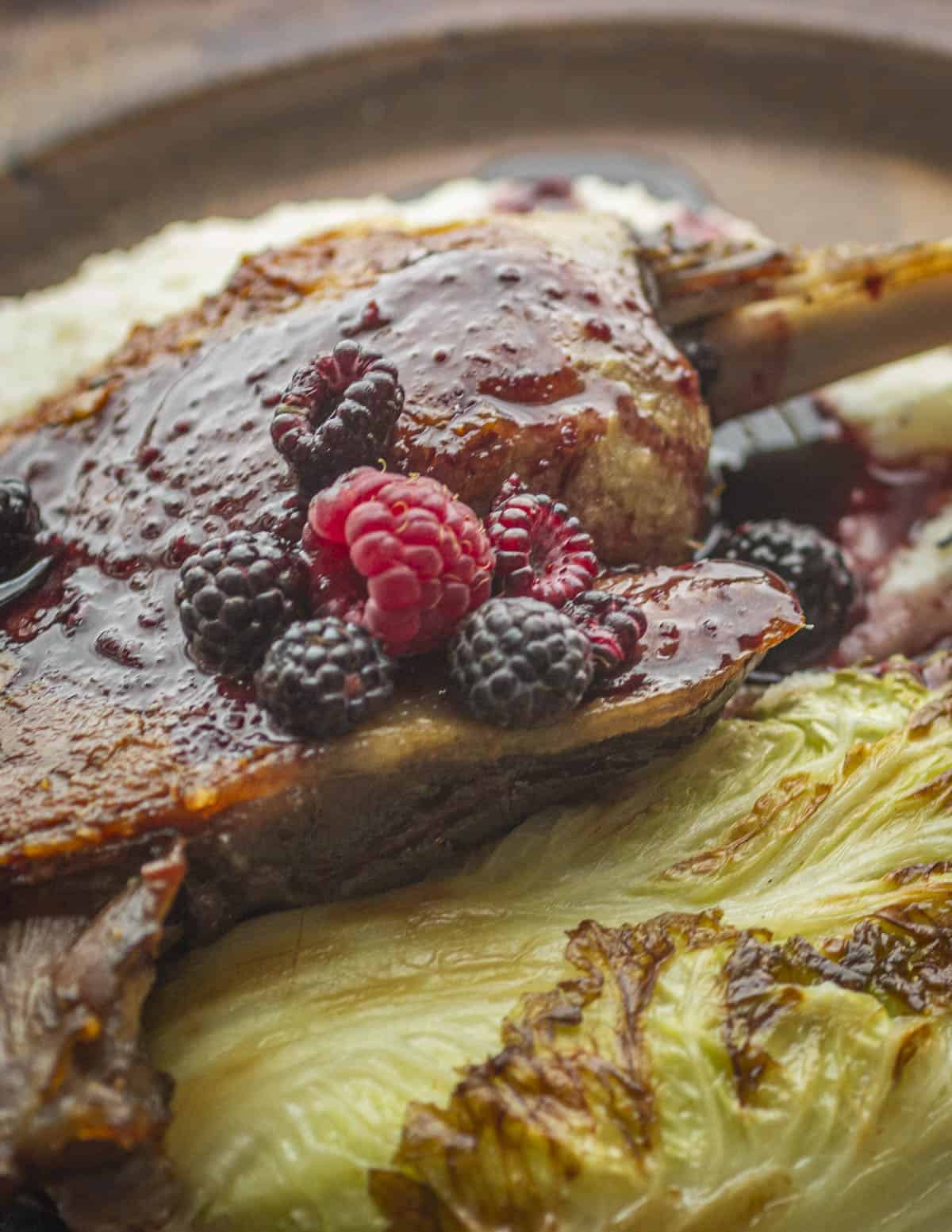
Generally speaking, black caps pair well with apples, rhubarb and strawberries in baked goods, pies and jams.
I also love them pureed in smoothies, ice cream drinks and shakes, or juiced with apples and fruit juices. Try adding a handful of frozen berries to mulled apple cider in the fall.
Black cap ice cream
A classic black raspberry recipe-I love my version made with maple syrup.
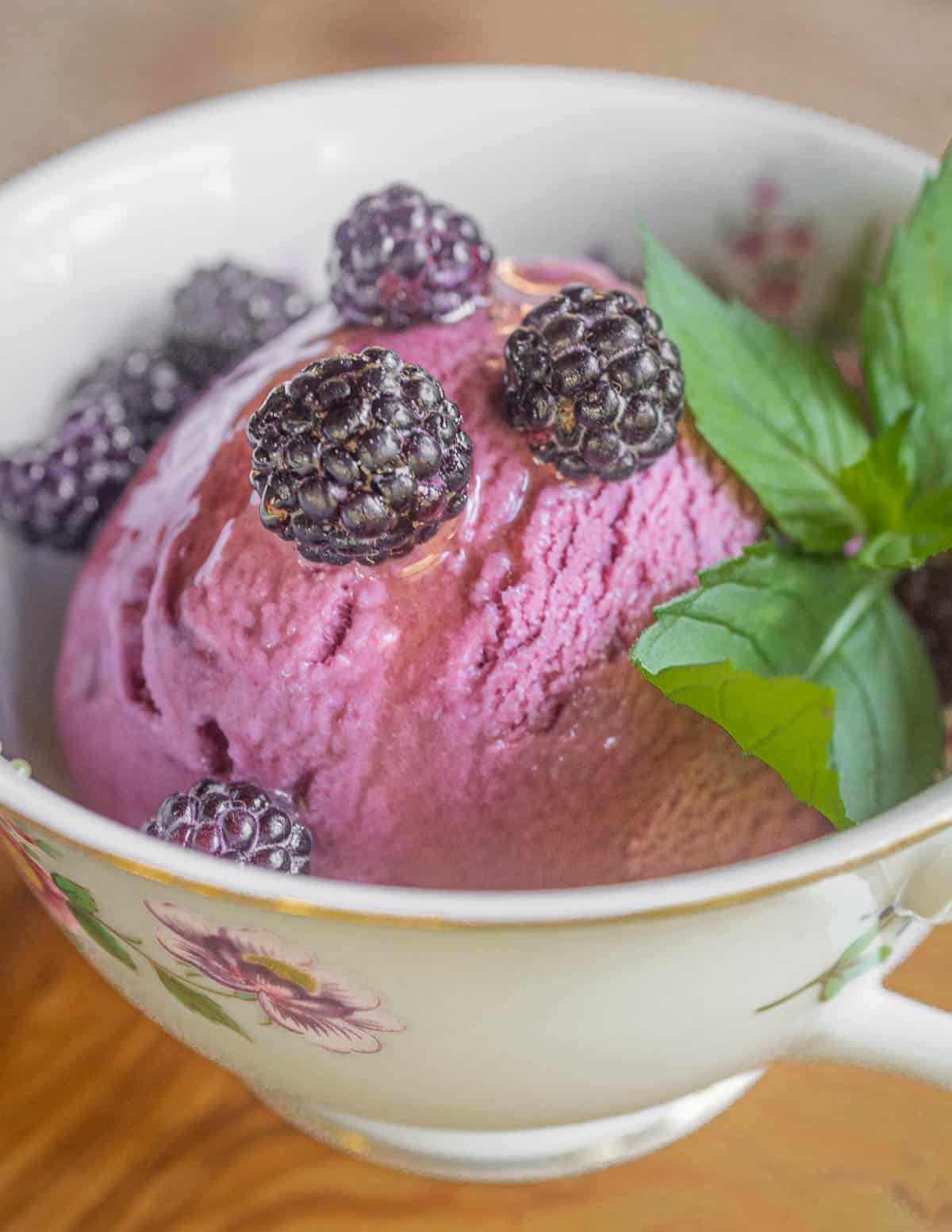
Homemade Raspberry Vinegar
Raspberry vinegar was a staple in kitchens I worked in growing up, but a homemade version is something entirely different. Inspired by the Roux Brothers, I soak berries in vinegar for a week or two, strain, and sweeten with maple syrup. You can double up on the flavor using homemade fruit scrap vinegar, and doing a double infusion of berries. Here's the recipe.
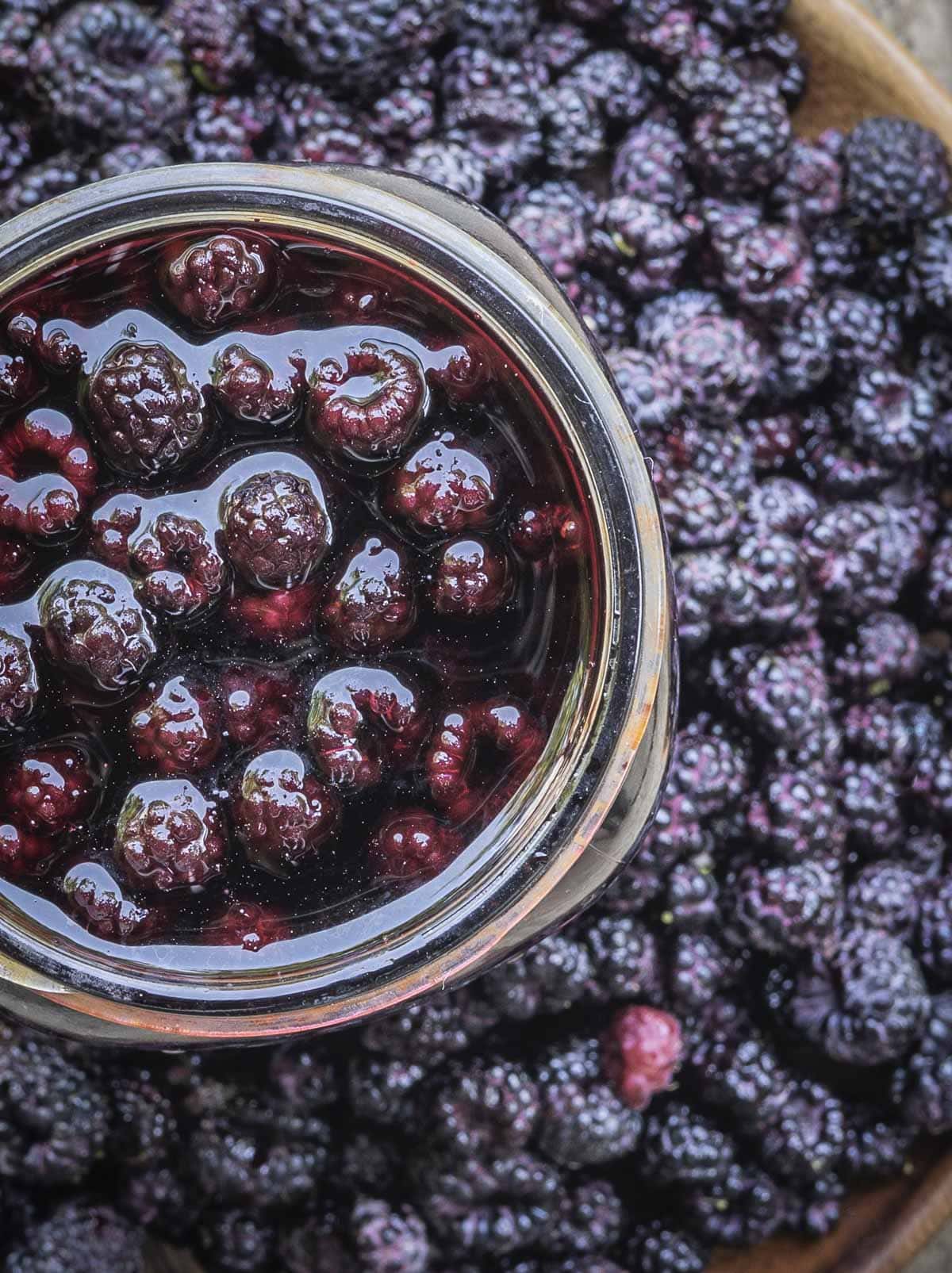
This, and the following raspberry liqueur are the best things to make with larve-damaged fruit. Of course, they can also be fermented into raspberry wine.
Homemade Raspberry Liqueur
A nectar of the gods. Soak fresh fruit in brandy sweetened to taste with maple syrup. Serve it in shot glasses after dinner or use it to make a black cap kir royale with champagne. I use my recipe for Cassis Blackcurrant Liqueur.
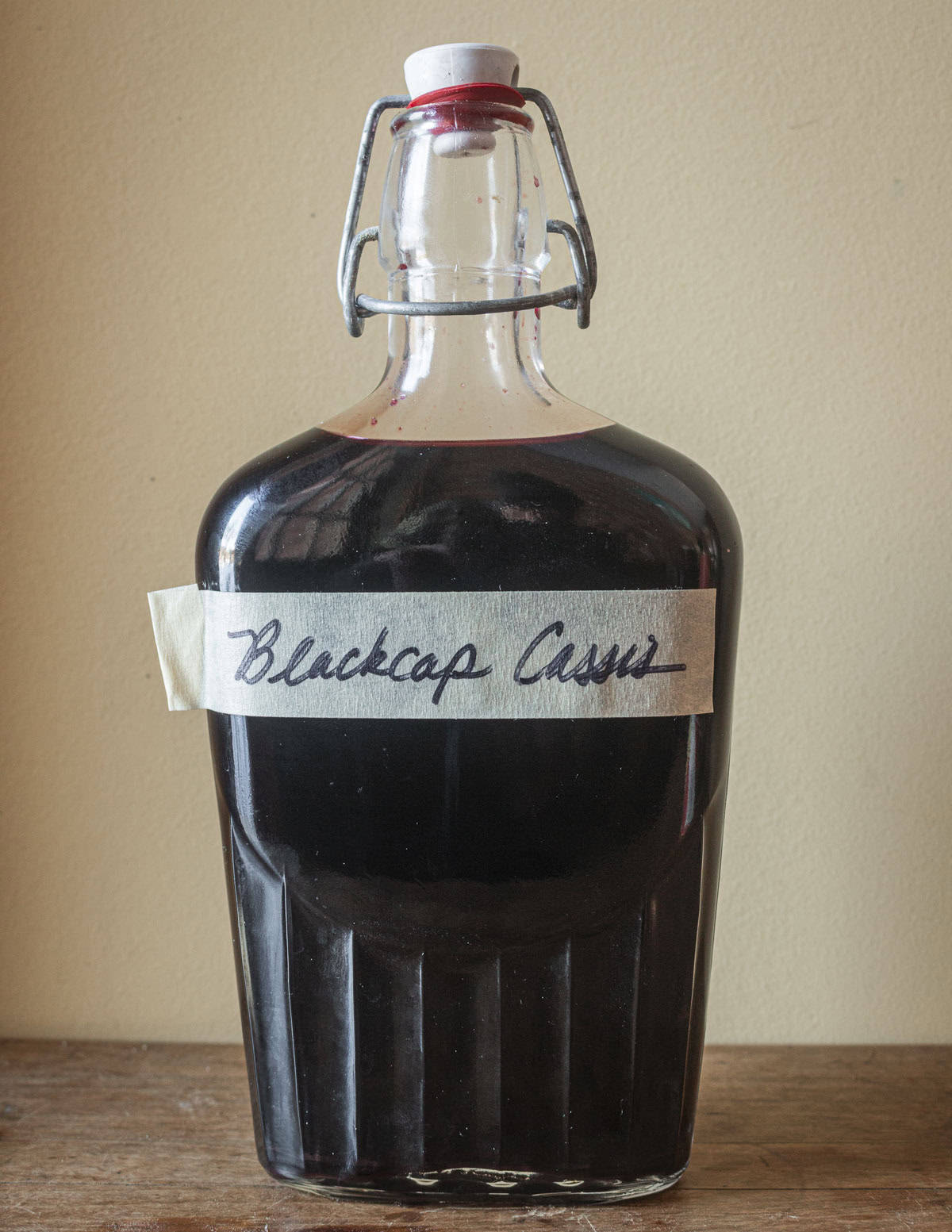
Raspberry Leaf Tea
Instead of tasting vegetal as I expected, the leaves make a fruity raspberry flavored tea, just without any acidity. I started making it this spring and enjoy it hot or iced.
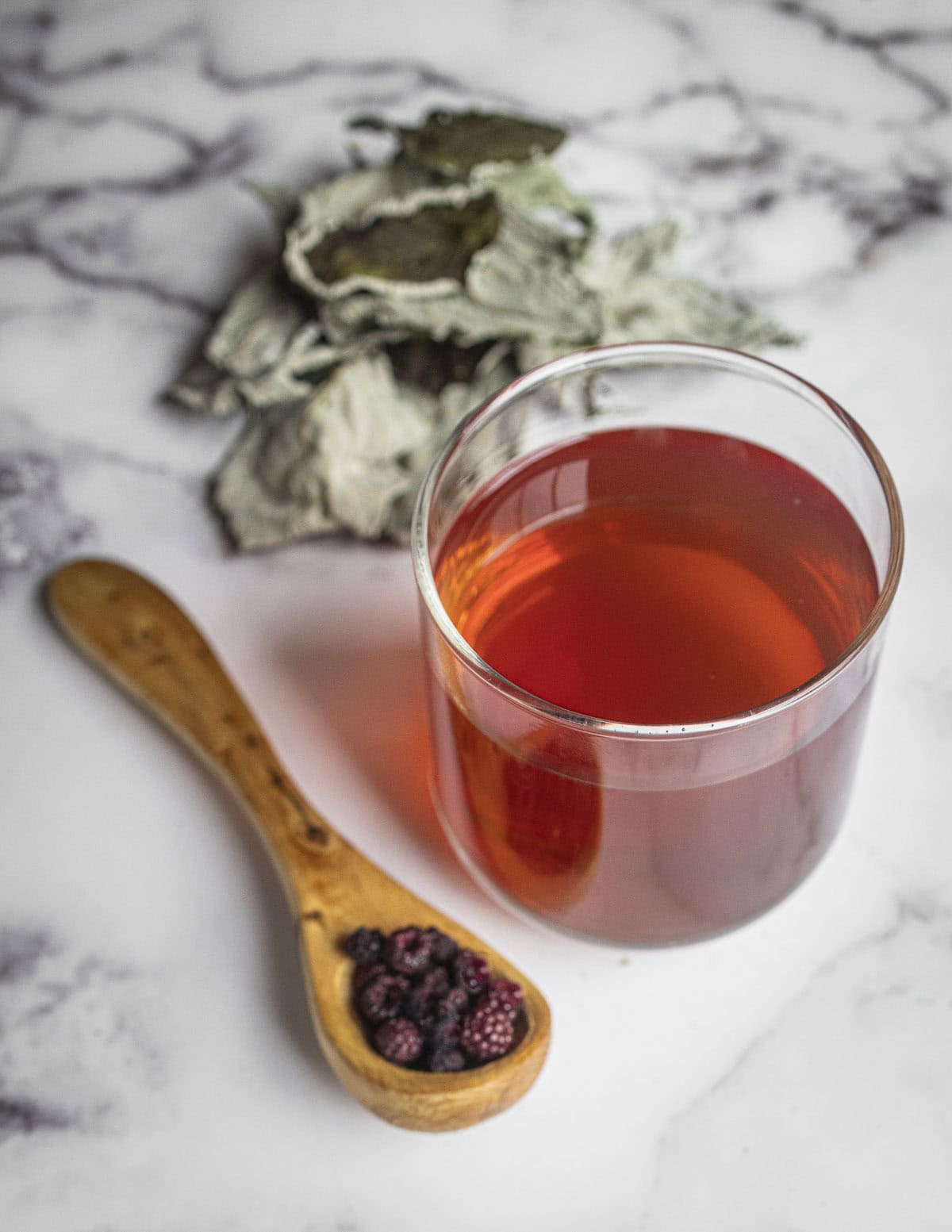
It's lovely sweetened with maple syrup and a splash of fresh lemon. To make it with fresh leaves, combine 32 oz water with 10 grams (10-14 leaves) and simmer for 10 minutes. For dried leaves, steep a tablespoon of leaves per cup. Add dried raspberries for color and extra aroma.
Black Raspberry Preserves
One of the first things I make. It's a luxury on buttered toast, but it's also how I use them in savory sauces, typically combined with their own vinegar, simmered and strained. The berries are quite seedy, so you may want to pass them through a food mill or mix them with other fruit-especially stone fruit.
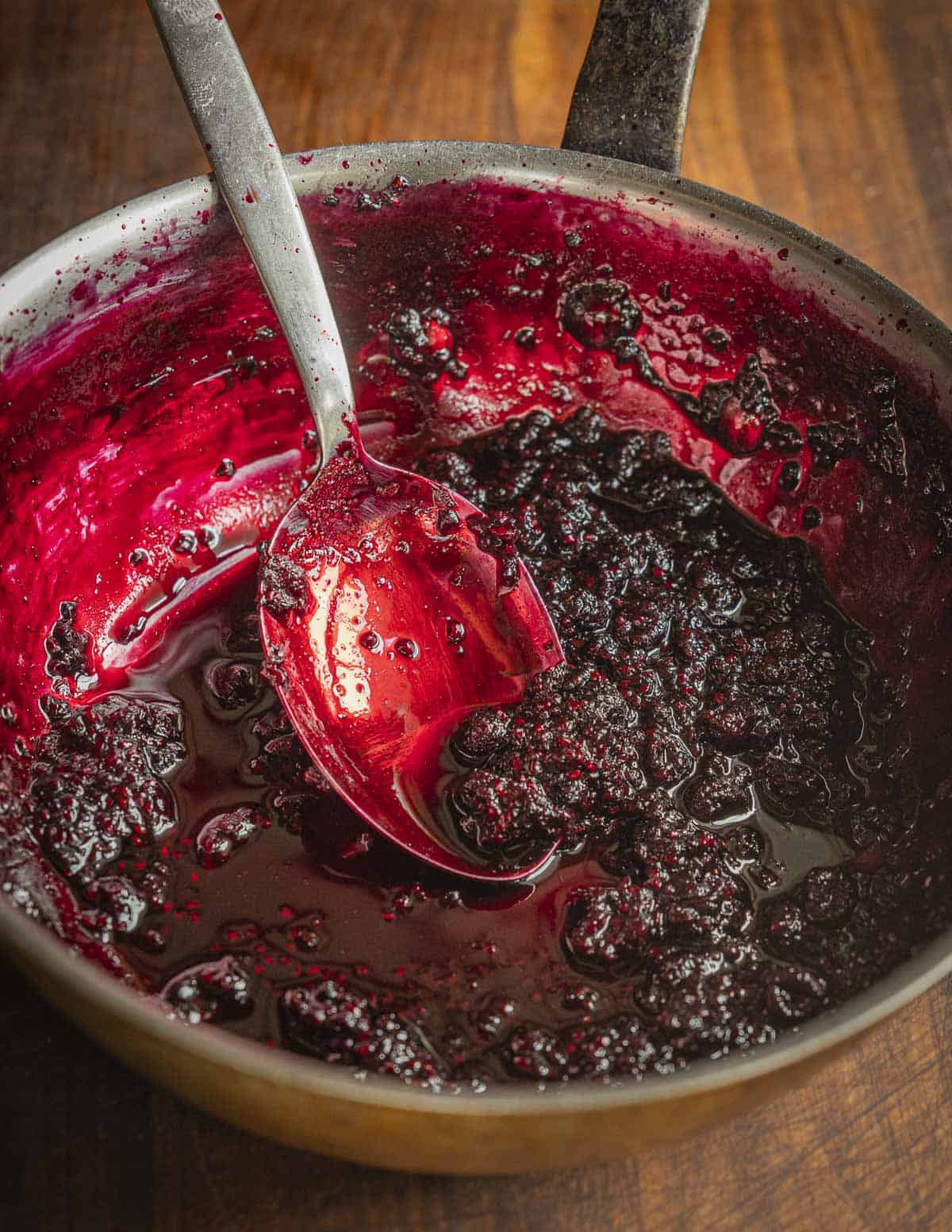
To make it, follow my recipe for no-pectin mulberry jam, omitting citrus zest and cinnamon. I also prefer maple syrup in place of the sugar.
Related Posts
Do you love black caps as much as I do? Have a good family story about them or a way you really like them? Feel free to leave a comment and share.

Sally
I learned to pick these at our dairy farm when I was about four, our grandmother would give us all buckets and off we'd go! I don't get poison ivy so it was my job to pick in those patches. I still live on some of our farmland in NY State and at 72 still picking. I make jam and IQF some for cobblers and other things. This year's crop is huge! I'm thinking from all the rain we had at the early stages. So nice to know there are so many of us using them! Sally
Alan Bergo
Thanks Sally.
Pixie
I DO love black caps as much as you do! They were the second wild berry I picked as a child. The first was wild strawberries, which ripen in June. The very word "Black Caps" ushers in memories of my loving father...an avid outdoorsman who taught me their name (as well as how to look under the leaves for hidden drupes that other kids missed).
Great article, with new info on a lifelong love. And you're right, I can't un-see those horrid worms (eew)!
Mike Moranz
I have a hybrid variety in my yard that has large "cat claw" thorns. 3 plants in a 2x6 raised bed with supports to make harvesting easier. I've picked about 1 1/2 gallons so far.
Another idea for use is a basic syrup that keeps in the fridge. Very good in ice tea or lemonade. Also, I make a fermented black raspberry cyser with apple juice and honey which goes on tap to get carbonated. Lastly, if you wash the berries and lightly drain before adding sugar you get a nice juicy sauce when you spoon them over yogurt or ice cream.
Bradford
IQF means Individually quantified and frozen, not quick frozen.
Lou Dora
Where to purchase black raspberries? I haven't been able to find in my local grocers would love to start using in my smoothies hope to hear from you soon
Thanks
Larry Hoover
Nice, nice article!
Thank You
Alan Bergo
Thanks Larry.
Vicki Zacharewicz
Hi Chef Alan, Since the berries are so perishable, do you wash the berries before freezing them? Usually the berries look pretty good, but ya know, critters! Thanks, Vicki
Alan Bergo
Hi Vicki. No, generally I dont wash them. And the critters in question (fly larvae) are inside the drupes so it wouldn’t remove them. If they’re gritty (blueberries, mulberries) I’ll make them into vinegar or something that will be strained. Washing berries, especially very ripe ones can ruin them by washing away their juices. Sturdy grocery store fruit I may wash because I’m skeptical of pesticides, but even then I’d never be washing raspberries. Hope that helps-I asked Sam Thayer the same thing the first time we picked blueberries together and he looked at me like I was a crazy person.
Sama Cunningham
Hi Alan,
Thanks for this write-up! Have you had any success drying them? I always like drying fruit when I can, I eat it a lot on salads, in trail mix, alone as a snack, etc. I've assumed they're too seedy to dry well (even dried just to the point of chewiness), and had thought a fruit leather might be a better idea. I generally prefer the simple dried fruit to fruit leathers, though, so I'm curious what you think. Thanks!
Alan Bergo
Hi Sama. I'm snacking on dried black caps and regular raspberries as I type this. You can dry them-absolutely (high heat 145F for 24 hours worked fine for me) but they're crunchy and definitely not sweet. Maybe mixed into granola or something like a smoothie where they can be spread out they would work. Following that, whereas dried raspberries are something I do use for powder as it's bright, red and tart, black caps lose most of their character dried so I typically use wet methods to preserve them.
Sama
Thanks for this Alan! I'll play around with drying them and see how I like eating them.
chris
I have dehydrated them and use them in my morning oatmeal. Just throw a handful into the water while waiting for it to come to a boil. After they reach boiling add your oats. (Use a little extra water than for oats alone.) When done, add some maple syrup and cinnamon and whatever else you enjoy.
Donna kurber
For many years I have used coffee cans with hole drilled in the top rim and threaded a rope to tie around my waist. plastic Folger coffee cans have been my go to for the last years the plastic melts easy to put two hole for shoe lace or thin rope to tie around your waist. Also some times its just to hot for long sleaves I take old socks cut the foot part out and use as arm guards works great. Another thing to add you can tell your blackcap canes by there nice green color.
Alan Bergo
Thanks Donna. Love the coffee can idea.
Dean G Sherwood
Black raspberries also make a terrific shrub. One thing you may not know, that bloom on the cane is an excellent baker's yeast. Take equal parts of flour and water, drop in cut up raspberry canes and strain it when it starts to bubble vigorously. There's your sourdough starter. I've done it myself, though my starter was built on wild grapes. It isn't what you start with that counts, it's all in how it's maintained.
Alan Bergo
Thanks Dean, nice to hear from you. Yeah the bloom on anything is kinda magic.
Tamar Amidon
Raspberry leaf tea is excellent for women's health issues, especially thru pregnancy
https://benefits-of-things.com/raspberry-leaf-tea-benefits-side-effects/
I have many black caps here (central MA) that are coming ripe right now. I have issues with how seedy they are, tho. I have to put them thru a berry mill for making jam
Alan Bergo
Thanks Tamar. Yes they can be seedy. Typically I use my preserves in savory sauces where they're cooked with meat stock and strained. Similar with sweet sauces.
Cheryl Burleson
Thanks so much, I didn't know there were fall bearing bushes, we have the kind that bear in June, I make pies and jam, and freeze some as well, I'll have to look for some fall bearing ones, and also try the tea. Cheryl Burleson
Alan Bergo
Thanks Cheryl. I wasn't aware of them either, but when I consider them in light of the fruit flies not liking cold weather they're pretty appealing.